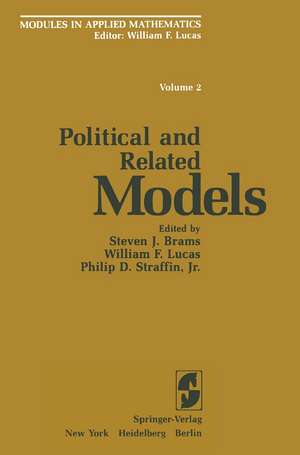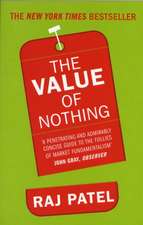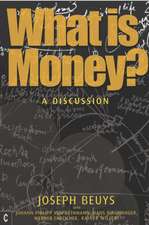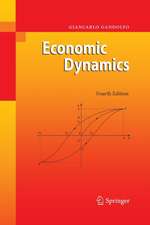Political and Related Models: Modules in Applied Mathematics
Editat de S. J. Brams W. F. Lucas Editat de P. D. Jr. Straffinen Limba Engleză Paperback – 26 noi 2012
Preț: 395.25 lei
Nou
Puncte Express: 593
Preț estimativ în valută:
75.63€ • 80.88$ • 63.06£
75.63€ • 80.88$ • 63.06£
Carte tipărită la comandă
Livrare economică 18 aprilie-02 mai
Preluare comenzi: 021 569.72.76
Specificații
ISBN-13: 9781461254324
ISBN-10: 1461254329
Pagini: 420
Ilustrații: XX, 396 p.
Dimensiuni: 155 x 235 x 22 mm
Greutate: 0.59 kg
Ediția:Softcover reprint of the original 1st ed. 1983
Editura: Springer
Colecția Springer
Seria Modules in Applied Mathematics
Locul publicării:New York, NY, United States
ISBN-10: 1461254329
Pagini: 420
Ilustrații: XX, 396 p.
Dimensiuni: 155 x 235 x 22 mm
Greutate: 0.59 kg
Ediția:Softcover reprint of the original 1st ed. 1983
Editura: Springer
Colecția Springer
Seria Modules in Applied Mathematics
Locul publicării:New York, NY, United States
Public țintă
ResearchCuprins
1. The Process of Applied Mathematics.- 1. Introduction.- 2. Applied Mathematics as a Process.- 3. The Construction and Use of Mathematical Models.- 4. Planetary Motion: The Evolution of a Model.- 5. An Example from Psychology.- 6. Concluding Remarks.- References.- 2. Proportional Representation.- 1. Introduction.- 2. Cumulative Voting.- 3. Single Transferable Vote.- 4. Cumulative Voting with Transfer of Surplus.- 5. Cumulative Voting with Transfer of Surplus and Elimination of Low-Ranking Candidates.- 6. An Illustration of the Use of Cumulative Voting.- 7. STV versus CTV.- References.- Notes for the Instructor.- 3. Comparison Voting.- 1. Preview: Do the Rules of the Game Make a Difference?.- 2. Introduction.- 3. Negative Voting in Two-Candidate Contests.- 4. Negative Voting in Three-Candidate Contests without a Runoff.- 5. Negative Voting in Three-Candidate Contests with a Runoff.- 6. Advantages of Approval Voting.- 7. General Results for Approval Voting.- 8. The Possible Confounding Effects of a Poll.- 9. Approval Voting and Presidential Elections.- 10. Summary and Conclusions.- Solutions to Selected Exercises.- References.- Notes for the Instructor.- 4. Modeling Coalitional Values.- 1. Introduction.- 2. Basic Concepts.- 3. Some Experiments.- 4. Some Pollution Models.- 5. Equitable User’s Fees.- 6. Economic Markets.- 7. Business Games.- References.- Notes for the Instructor.- 5. Urban Wastewater Management Planning.- 1. Introduction.- 2. Description of the Study Area and the Scenario.- 3. Environmental Engineering Design.- 4. Economic Analysis.- 5. Financial Analysis.- 6. Environmental Impact Statement—Ecology.- 7. Public Participation.- 8. Political Science.- 9. Epilogue.- Notes for the Instructor.- 6. An Everyday Approach to Matrix Operations.- 1. Introductionto Vectors and Matrices.- 2. Vector Addition, Subtraction, and Multiplication by Scalars.- 3. Vector Inner Product.- 4. Multiplication of a Matrix and a Vector.- 5. Matrix Addition, Subtraction, and Multiplication.- 6. Properties of Matrix Operations and Special Matrices.- 7. Matrices and Profits.- Exercises.- Reference.- Notes for the Instructor.- 7. Sources of Applications of Mathematics in Ecological and Environmental Subject Areas, Suitable for Classroom Use.- 1. Introduction.- 2. Probability Theory.- 3. Matrix and Linear Algebra.- 4. Calculus.- 5. Differential Equations.- 6. Game Theory.- 7. Graph Theory.- 8. Optimal Control Theory.- 9. Miscellaneous.- References.- 8. How To Ask Sensitive Questions without Getting Punched in the Nose.- 1. Introduction.- 2. Definitions.- 3. The Randomized Response Method.- 4. Unrelated Question Model.- 5. Using the Randomized Response Method and the Unrelated Question Model.- 6. Classroom Suggestions.- 7. Complements and Problems.- Appendix: Randomized Response Survey.- References.- Notes for the Instructor.- 9. Measuring Power in Weighted Voting Systems.- 1. Introduction.- 2. Simple Examples.- 3. Measures in Voting Power.- 4. Additional Examples.- 5. Mini-Projects.- 6. Computational Aids.- 7. The Electoral College.- 8. Additional Voting Problems.- 9. Limits of the Mathematical Models.- References.- Notes for the Instructor.- 10. To the (Minimal Winning) Victors Go the (Equally Divided) Spoils: A New Power Index for Simple n-Person Games.- 1. Introduction.- 2. Power Index Definition and Examples.- 3. Characterization Axioms.- 4. Applications and Limitations.- 5. Concluding Remarks.- Exercises.- References.- Notes for the Instructor.- 11. Power Indices in Politics.- 1. Voting Games and Power Indices.- 2. Using the Power Indices.- 3.Characterizing the Power Indices.- Solutions to Selected Exercises.- References.- Notes for the Instructor.- 12. Committee Decision Making.- 1. Introduction.- 2. Committee Decision-Making Experiment.- 3. Geometric Representation of the Situation.- 4. Utility.- 5. Remarks on Models in Political Science.- 6. The Barycenter Model.- 7. The Pareto Model.- 8. The Core Model.- 9. General Discussion.- 10. The Arrow Theorem.- Appendix I: An Example of an Experiment.- Appendix II: Mathematical Notes.- Notes for the Instructor.- 13. Stochastic Difference Equations with Sociological Applications.- 1. Difference Equation Models.- 2. Review of Probability and Statistics.- 3. Stochastic Difference Equations.- Notes for the Instructor.- 14. The Apportionment Problem.- 1. The Basic Problem.- 2. Some Traditional Methods.- 3. Local Measures of Inequity.- 4. The Axiomatic Approach.- 5. The General Apportionment Problem.- 6. Conclusions.- References.



















